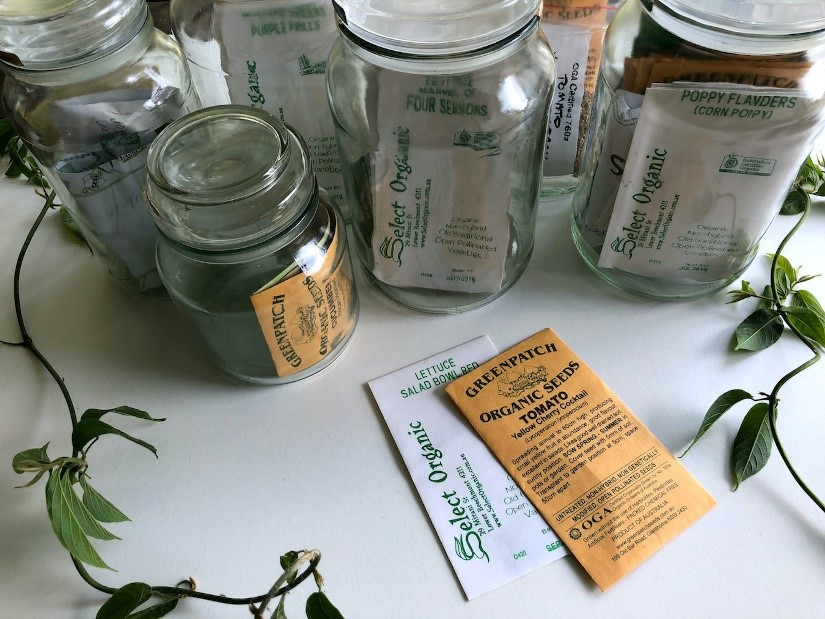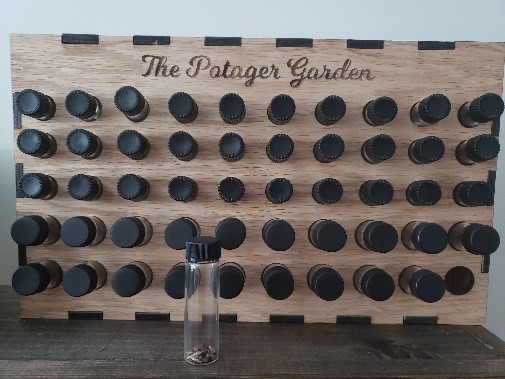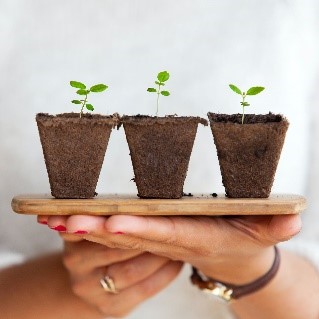
Saving Seeds

It is essential to collect and save seeds after harvesting your herbs, fruits, vegetables, and other plants from your garden. With the saved seeds, you will have enough for the planting season, saving money. Besides, locally produced seeds will grow into plants that adapt to your location.
For the seeds to be viable come planting time, it is essential to collect and store them correctly. But how do you go about it? Read on to learn the secrets of saving seeds for your garden.
How to Save Seeds from Flowers, Herbs, Vegetables, and Fruits
Seeds are collected and kept differently. Here is how you save seeds for various plant types:
- Flowers
Once the petals fall down, it’s time to harvest your flower seeds. Cut the flower head and extract the seeds. Allow them to dry for around 6-7 days. Remove the husks and foreign materials from the seeds. Store the seeds in a labeled and sealed container/envelope in a cool, dry location.
- Herbs
To harvest seeds from your herbs, you must let the flowers develop to produce the seeds. Let the plants mature, and when the heads or pods dry, you can start to harvest the seeds.
Use a basin below the heads and tip them to release the seeds. You may be required to crush or roll the heads between your hands in some herbs. Once you have the seeds, let them dry for some time, and store them in an air-tight glass container in a dark and dry place at freezing temperatures. Remember to label the container.
- Vegetables
For fruit-vegetables like tomatoes, you wait until the fruits mature. Then, you cut the fruit open and extract the seeds. Allow the seeds to dry for several days, and place them in a container and seal them. Store the containers in a dry place with very low temperatures.
For vegetables like kales that produce pods, wait until the pods dry up. Cut off the pods, and split them to have the seeds. Let the valuable seeds dry for several days and place them in a glass container(s), seal, and label.
- Fruits
You should handpick mature, ripe fruits to save seeds from wet fruits. Split the fruits open to get the seed(s). Dry the seeds for days and keep them in sealed containers or a refrigerated room for many large seeds.
Where and How Can You Store the Saved Seeds?

Once you place the seeds in containers or sealed envelopes, you can keep them in a cool, dry, and dark area. You can store the containers/envelopes with seeds in a cold, dark closet or a cool basement room. A refrigerated room is also suitable to keep high-value seeds. I keep mine in little bottles!
How Long Can They Be Stored?
Seeds in good condition, dried, and stored properly can be stored for up to one year. However, depending on plants, some may last less than a year, like onion seeds, while others more than 3 years, like lettuce.
Most annual flower seeds can be reserved for up to 3 years, while most vegetable seeds can remain viable for 1-2 years. Most herb seeds in good condition can be stored for more than one year. For fruit seeds, most of them will remain viable for at least one year.
Testing Older Seeds If They Will Germinate

The water test is the common method of testing seed viability. Put some of the seeds in a basin of water. Allow them to rest for approximately 20 minutes. If the seeds sink, they can germinate. If they float, they will have lost viability.
You can as well test them using the germination test method. Place the seeds in a damp cotton wool and fold. Place the wool in a plastic bag (zip-up type) and seal it. Place the bag in a warm place. Viable seeds should germinate after several days to up to a few weeks.
Final Thoughts
Collecting and saving seeds from your garden will help you save money come next planting season. Additionally, you can have excess seeds that you can trade with other people. At The Potager Gardener, you can learn more about seed harvesting and gardening. Check out our videos and blogs at www.thepotagergardener.com
Katie Namet
The Potager Gardener
